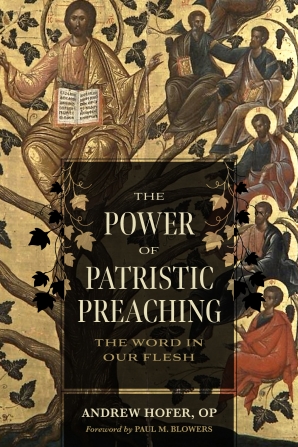Preparing your PDF for download...
There was a problem with your download, please contact the server administrator.
Cardinal Tommaso de Vio (1469-1534), commonly known as Cajetan, remains a misunderstood figure. Cajetan on Sacred Doctrine is the first ever monograph on Cajetan as a theologian in his own right, and it fills an immense lacuna in the debate on the nature of sacred doctrine from the Thomism of the Renaissance. Confirming Cajetan as a key protagonist within the emergent Reformation, this work delivers an indispensable immersion into his theological method in relation to his closest predecessors and contemporaries: Hervaeus Natalis, Blessed Duns Scotus, Gregory of Rimini, Johannes Capreolus, Silvestro Mazzolini da Prierio, Martin Luther, and others.
The first ever commentary on St. Thomas Aquinas’s entire Summa Theologiae was published by Cajetan. This monograph focuses primarily on the Summa Theologiae Ia pars, question 1, concerning sacred doctrine, and how Cajetan unpacks the potency of Aquinas’s opening syllogism, setting forth a coherent division of the question, and ultimately touching the mind of Aquinas when revealing the articles of the Apostles’ Creed as the Summa Theologiae’s macrostructure. Finally, we are shown how Cajetan emphasizes the essential link between ecclesiology and the communication of sacred doctrine, especially the papacy’s role in guaranteeing the proposal and explication of the faith.
Cajetan’s accomplishments as a biblical exegete established him as a renowned Renaissance scholar and a forerunner of future ecumenical dialogue. Furthermore, his grasp of theology’s perennial properties continue to make him an important interlocutor in the renewed quest for a unity in theology in an ever more fragmented aggregation of theologies.
Cajetan’s theological labor is a perpetuation of the via antiqua, a biblical-theological worldview handed down through Tradition. St. Gregory the Theologian (329-390), the via antiqua’s preeminent Eastern representative and chief theological constructor of Christendom, offers the monograph’s author--himself a Byzantine Hieromonk--a prime opportunity for a few closing insights on the innate symphony between two very distant periods and distinct theological traditions within the one ecumenical Church.
Hieromonk Gregory Hrynkiw is a hermit in the Hermitage of the Three Holy Hierarchs, Saskatchewan, Canada. Andrew Hofer, OP is Associate Professor of Patristics and Ancient Languages, Dominican House of Studies, Washington, DC.
"No other work that I know has treated this topic of Sacred Doctrine in Cajetan…argues that Cajetan’s work is a sadly neglected resource, which contemporary theology would do well to appropriate. – Jared Wicks, SJ, author of Investigating Vatican II: Its Theologians, Ecumenical Turn, and Biblical Commitment (CUA Press)"
"The sixteenth-century Thomist commentator, Thomas de Vio, known as Cardinal Cajetan, occupies a central place in the Thomist Commentatorial tradition. What he says about sacred doctrine remains of utmost importance for a rediscovery of theology's proper place in the Church. I say rediscovery because the centuries after Cajetan's death in 1534 have not always treated the sacred science well....The author provides a splendid presentation of Cajetan's thought and its significance for today. The foreword complements this altogether useful book to introduce students to the true nature of theology."
~Romanus Cessario, Ave Maria University
"Setting Cajetan within the context of a discussion with Church Fathers, especially Gregory of Nazianzus, Scholastics, including Aquinas, Scotus, and Ockham, and Cajetan's contemporaries, including Erasmus and Luther, Cajetan on Sacred Doctrine is worthy of the attention of scholars of each of these eras in Christian thought. For all of its careful attention to argumentation and to engagement with primary and secondary sources, Cajetan on Sacred Doctrine can be read as an extended mediation upon the relationship established between the Persons of the Trinity and the baptized person through the gift of faith."
~Domenic D'Ettore, author of Analogy after Aquinas: Logical Problems, Thomistic Solutions
"The first question of St. Thomas's Summa theologiae has a unique importance in setting out the nature, object, and method of sacred theology as the foundation on which the rest of the Summa builds. Hieromonk Gregory Hrynkiw helps to elucidate this foundation by giving us an in-depth study of the commentary on this question written by Cardinal Cajetan (Tommaso de Vio), arguably the greatest Thomist of the Renaissance and the first to write a commentary on the whole of the Summa."
~Lawrence Feingold, Kenrick-Glennon Seminary
"Scotus's insistence on the univocity of being supposedly protected the possibility of human knowledge of God, but Cajetan saw that it entailed a non-univocal understanding of sacra doctrina, thus abandoning the notion of theology as a participation in God's knowledge. While much attention has been paid to the logical and metaphysical ground Cajetan sought to protect, this remarkable study expounds Cajetan's insight into Aquinas's Summa theologiae as a preparation for sharing in the mind of God."
~Joshua Hochschild, Mount St. Mary's University
"It would [be] beneficial to those interested in growing in the progressive realization of faith to read and meditate on this book. There are many very thoughtful reflections and arguments that Hrynkiw clearly, repeatedly, and comprehensively makes in his case for a fresh look at Cajetan. Theologians of all ages and experience can benefit from this work."
~Catholic Books Review
"In view of Cajetan's multifaceted role in theological and philosophical debates as well as in church politics, Gregory Hrynkiw's book is an important addition, clarifying the systematic-theological and exegetical profile of the well-known (and often reviled) commentator on the Summa Theologiae. The book is based on a thorough study of the sources. The author possesses a profound knowledge of the relevant secondary literature, as shown in the extensive footnote apparatus. Above all, the author has also highlighted -- relevant for today's understanding of theology-- the differences between Cajetan and Duns Scotus."
~Revue philosophique de Louvain
"His book provides an engaging overview of Cajetan’s account of theology, and consequently, of the way in which theology was understood by one of the most prominent figures in Thomistic theology."
~Thomist





